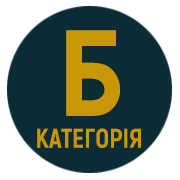CONCERNING SOME ISSUES OF SMALL MODULAR REACTORS (SMR) IMPLEMENTATION IN UKRAINE
DOI:
https://doi.org/10.32782/geotech2024.38.07Keywords:
water-water small modular reactors, safety and economic indicators, radioactive waste, site selection.Abstract
Abstract. The interest to low-power reactors (SMRs) is growing in many countries. SMR developers consider their application quite promising from many points of view. The growing demand for energy security and low-carbon energy in the context of the climate changes approaches the reality of SMR application. Being composed of separate modules and factory-constructed, SMRs show the promise of significant cost reduction. SMRs can also be used for heat providing for industrial processes, hydrogen production and water desalination. In this regard, balanced and objective information on advances in SMR design and technology development trends is needed by all countries considering application of SMRs. More than seventy SMR projects are under development worldwide. Various types of SMRs are being developed: water cooled, high temperature gas cooled, fast neutron, molten salt and microreactors. The majority of SMRs are in the early stages of design. SMR concepts based on the pressurized water-water reactor technology are in the late stage of design and on the highest levels of technological readiness for deployment. The prospects for the development of water-water SMR technologies have been analyzed based on the published data. The analysis included NuScale (iPWR), SMR-160, Westinghouse SMR, UK SMR advantages and disadvantages, conceptual approaches, characteristics of SF and RW generated during operation and decommissioning, and the existing regulatory documents regarding the selection of sites and disposal of the radioactive waste. Evaluating the prospects for the application of SMR technologies in Ukraine, priority should be given to the water-water projects.
References
Brown, N., Worrall, A. and Todosow, M. Impact of thermal spectrum small modular reactors on performance of once-through nuclear fuel cycles with low-enriched uranium. Annals of Nuclear Energ, 2017. No. 101(2), pp. 166–173. https://doi.org/10.1016/j.anucene.2016.11.003
Дибач А. М. та ін. (2024). Підготовка регуляторної інфраструктури для впровадження ММР в Україні. Міжнародна конференція щодо малих модульних реакторів та їх впровадження. МАГАТЕ, Відень, Австрія, 21-25 жовтня 2024 р. https://www.iaea.org/ sites/default/files/24/10/cn-327_book_of_abstracts.pdf
ELSMOR project: Towards European Licencing of Small Modular Reactors (2019–2023). URL: https://cordis.europa.eu/project/id/847553.
Жабін О.І., Печериця О.В., Тараканов С.О., Шевченко І.А. Підхід до регуляторної передліцензійної оцінки проєкту ММР іноземного постачальника. Ядерна та радіаційна безпека, 2020. № 4(88), C. 4–13. https://doi.org/10.32918/nrs.2020.4(88).01.
IAEA (2023). International Atomic Energy Agency. Small modular reactors. URL: https://www.iaea.org/topics/small-modular-reactors.
IAEA Report (2019). Waste from Innovative Types of Reactors and Fuel Cycles. A Preliminary Study. IAEA Nuclear Energy Series, No. NW-T-1.7, 117 p. URL: https://www-pub.iaea.org/MTCD/publications/PDF/PUB1822_web.pdf.
IAEA (2020). Advances in Small Modular Reactor Technology Developments: A supplement to IAEA Advances Reactors Information System (ARIS). IAEA, Vienna, 354 p. URL: https://aris.iaea.org/Publications/SMR_Book_2020.pdf.
Mignacca B. and Locatelli G. Economics and finance of Small Modular Reactors: A systematic review and research agenda. Renewable and Sustainable Energy Reviews, 2020. Vol. 118, 109519. https://doi.org/10.1016/j.rser.2019.109519.
Носовський А.В. Щодо перспектив будівництва нових атомних електричних станцій. Ядерна енергетика та довкілля. 2019. № 3 (15). С. 3–13. https://doi.org/10.31717/2311-8253.19.3.
NuScale Power LLC (2020). Probabilistic Risk Assessment and Severe Accident Evaluation. Chapter Nineteen. PART 2 – TIER 2. Revision 4. URL: https://www.nrc.gov/docs/ML2003/ML20036D466.pdf.
OECD/NEA (2015). Projected Costs of Generating Electricity. URL: https://www.oecd-nea.org/ndd/pubs/2015/7057-proj-costs-electricity-2015.pdf.
Project INSC U.04.01/14B (2019–2021), “Development of the National Plan for the Geological Disposal of Radioactive Waste in Ukraine and its Implementation Schedule”. URL: https://nuclear-safety-cooperation.ec.europa.eu/contracts/ukraine-development-national-plan-intermediate-level-radioactive-waste-geological-disposal-and-its_en.
TANDEM project: Small Modular ReacTor for a European sAfe aNd Decarbonised Energy Mix (2022–2025). URL: https://tandemproject.eu. 14. Шабалін Б.Г. Стратегія поводження з відпрацьованим ядерним паливом і радіоактивними відходами малих водо-водяних модульних реакторів. Bulletin of National Technical University of Ukraine “Igor Sikorsky Kyiv Polytechnic Institute”. Series “Chemical Engineering, Ecology and Resource Saving”, 2023. № 2 (22), C. 76–87. https://doi.org/10.20535/2617-9741.2.2023.283527.
Sheffield Forgemasters Co. 2024. Sheffield Forgemasters makes global leap in nuclear welding technology. 2024. URL: https://www.sheffieldforgemasters.com/news-and-insights/news/02/sheffield-forgemasters-makes-global-leap-in-nuclear-welding-technology.
Schlissel D. and Wamsted D. Small Modular Reactors. Still too expensive, too slow and too risky. Institute of Energy Economics and Financial Analysis, 2024. 23 p. URL: https://ieefa.org/sites/default/files/2024-05/SMRs%20Still%20Too%20Expensive%20Too%20Slow%20Too%20Risky_May%202024.pdf









